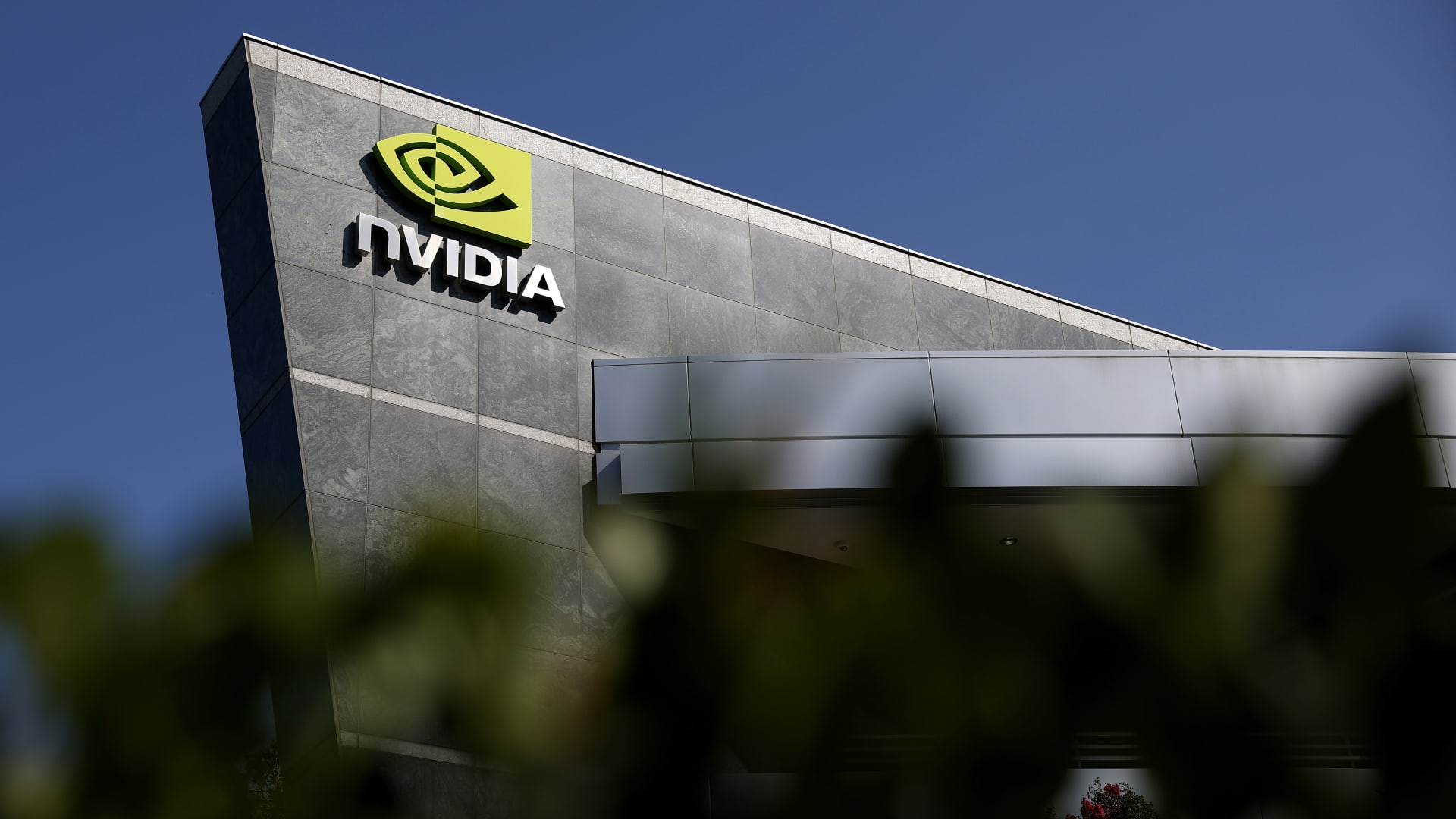Analysts at major Wall Street shops are sticking by Nvidia after the chipmaker’s latest results, with many lifting their targets on the stock. Nvidia on Wednesday reported second-quarter results that topped estimates and gave guidance for the current period that beat estimates. The company reported adjusted earnings of $1.05 per share on revenue of $46.74 billion, while analysts polled by LSEG expected $1.01 in earnings on $46.06 billion in revenue. Shares dipped about 1.9% before the bell as Nvidia’s data center revenue disappointed estimates for the second straight quarter. However, several analysts still raised their price targets on the stock, including JPMorgan, Citi and Jefferies. “We believe NVIDIA continues to execute across all segments. … We expect the data center segment to grow strongly as hyperscale customers continue to embrace GPU-accelerated deep learning for processing large data sets,” wrote JPMorgan’s Harlan Sur. Nvidia is up more than 35% this year after more than doubling in 2024. The company’s strong gains in recent years has led it to making up a huge part of the overall stock market. Nvidia currently makes up roughly 8% of the S & P 500 overall market cap. Sentiment on the stock is overwhelmingly bullish on shares. Of the 65 analysts covering the name, 21 rate the stock a strong buy and 37 give it a buy rating, while six maintain a hold rating, per LSEG. Their average price target suggests more than 8.5% potential upside ahead for the stock. Take a look at what analysts have to say about Nvidia’s latest results. Jefferies: Reiterates buy rating, increases price target by $5 to $205 The new target reflects 12.9% upside. “Demand signals remain rock solid with Hopper and Blackwell sold out across the board. Blackwell Ultra ramp well underway alleviating concerns of supply chain issues going forward. We see a path to $7+ in EPS next year with $8+ in C27 and continue to favor NVDA as our overall Top Pick.” JPMorgan: Maintains overweight rating, lifts price target by $45 to $215 JPMorgan’s new forecast signals 18% upside ahead. “All in, the playbook remains the same here for NVDA – a solid beat and raise with multiple levers at play to drive upside, against the backdrop of a multi-year runway of growth for AI infrastructure spending, with NVDA in our view continuing to capture a significant majority of the incremental spend (as it has over the past ~3 years),” analyst Harlan Sur said in a note. Bernstein: Keeps outperform rating, raises price target by $40 to $225 Bernstein’s target points to a 24% gain from Wednesday’s close. “Overall the results were good, though with the guide perhaps just a hair light of the latest whispers, and while bears might point to computing revenues falling sequentially in the quarter and an “only” inline(ish) datacenter guide this was really just around continued messy China dynamics,” analyst Stacy Rasgon said in a note. “But we believe guidance was still very respectable even as it continues to leave China as upside rather than count on it, and appears to indicate a sharp acceleration in the Blackwell ramp into next quarter suggesting core fundamentals remain robust. And the general outlook and environment overall still seem encouraging.” Truist: Reiterates buy rating, takes price target from $18 to $228 The new price target implies upside of 25.6%. “Investors will focus on NVDA’s sales results & guidance, which were both slightly below buyside expectations. We recognize this as a minor imperfection, and instead focus on management’s resilient longer-term outlook. This includes (1) Vera-Rubin is taped out and on track for 2026, (2) management gently endorsed a 50% growth view next year (well above consensus) and (3) management called out a ~50% AI infrastructure TAM CAGR, reaching $3-4T, by 2030. CY26 EPS goes to $6.50 (from $5.99).” Goldman Sachs: Reiterates buy rating and $200 price target “We expect the stock to trade down modestly following an in-line quarter and guidance, against a backdrop of elevated expectations heading into the call,” analyst James Schneider said. “In terms of Nvidia’s near-term fundamentals, our estimates are largely unchanged as ongoing Hopper sales and resilience in the non-Datacenter portfolio are largely offset by a slower Blackwell production ramp. We remain Buy rated on Nvidia given the magnitude of the upside opportunity we see in 2026, driven by both increasing hyperscaler spending and demand from non-traditional customers – and our EPS estimates stand ~10% above the Street for 2026.” Citi: Keeps buy rating, lifts price target by $20 to $210 The new price target signals more than 15% upside. “We see continued upside to data center sales with/without China as Nvidia has received licenses on select China customers but has not shipped or included in the guide which could range in the $2-$5B/Q opportunity. We lift our CY25/26 EPS 2%/10% and reflect 10% higher or 100k GB300 racks/week + networking attach rates. Our TP moves to $210 on consistent 30x P/E times revised CY26 EPS power of ~$7.” Loop Capital: Reiterates buy rating and $250 price target Loop’s forecast implies a gain of nearly 38%. Simplistically, our work suggests that Hyperscale & AI Factory (Sovereign, Neocloud & Enterprise) Gen AI & AI Accelerator compute spending ALONE could increase to ~$2.0T by 2028 using current compute economics. We also understand that this suggests a $6T NVDA Market Cap. If NVDA were to do our numbers and not reach our PT, that would suggest P/E compression below NVDA’s (and other mega-cap tech valuations) of 30x, where NVDA has been trading the last 36 months.” KeyBanc: Keeps overweight rating, raises price target to $230 from $215 “NVDA is currently trading at 32x consensus forward P/E. By comparison, peers are trading at an average consensus forward P/E multiple of 34x. We see NVDA as remaining uniquely positioned to benefit from AI/ML secular data center growth within the industry. With significant barriers to entry created by its CUDA software stack, we see limited competitive risks and expect NVDA to continue to dominate one of the fastest growing workloads in cloud and enterprise.”





